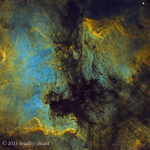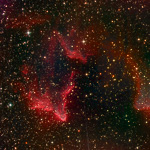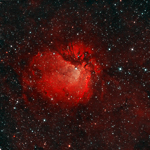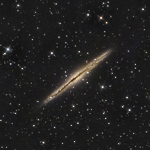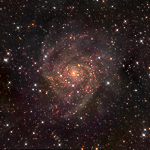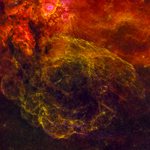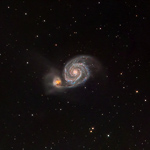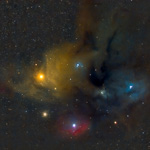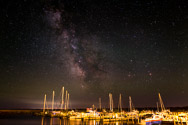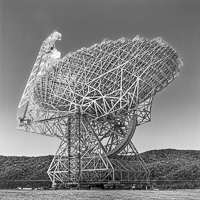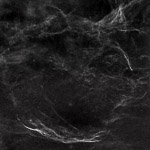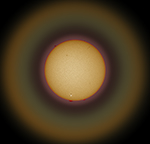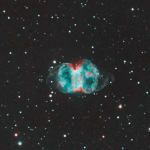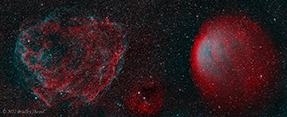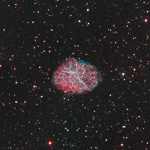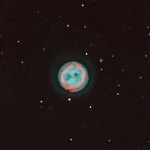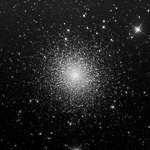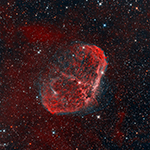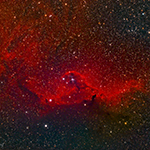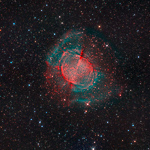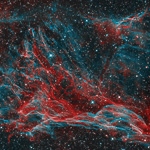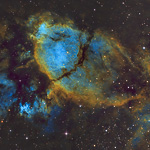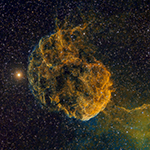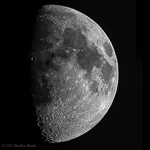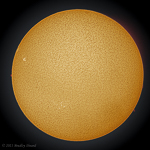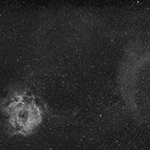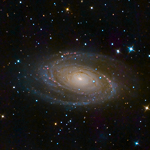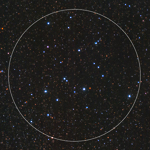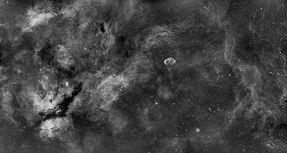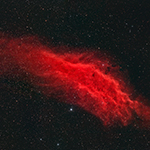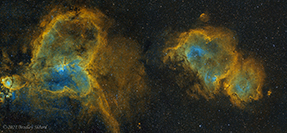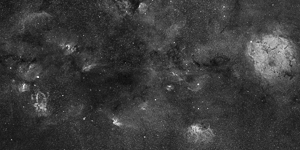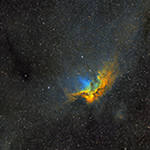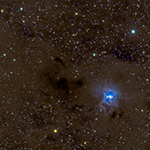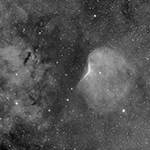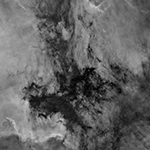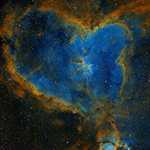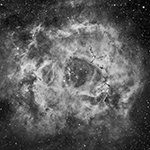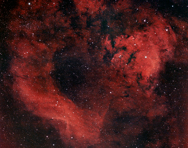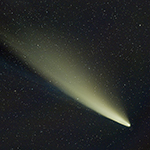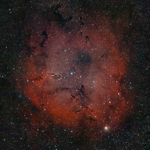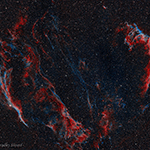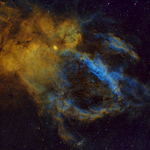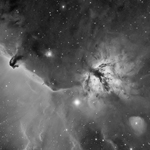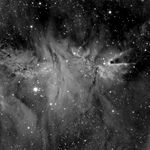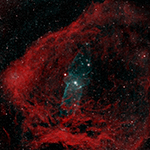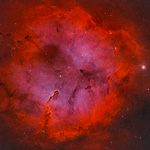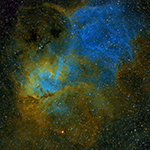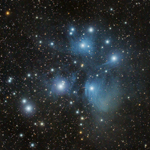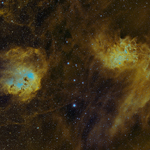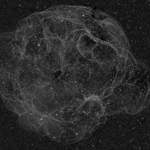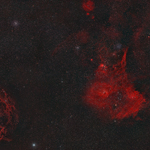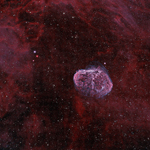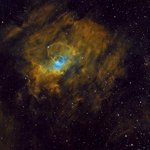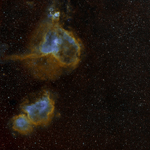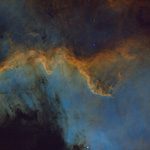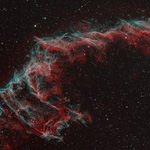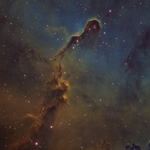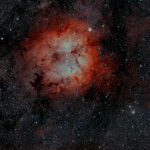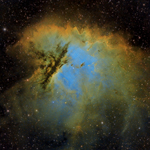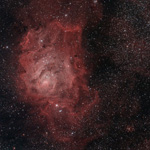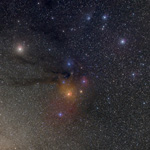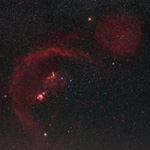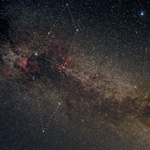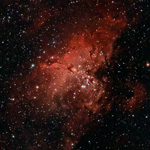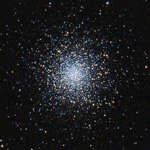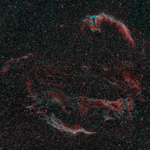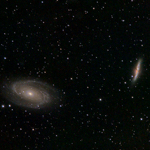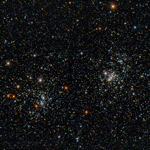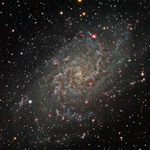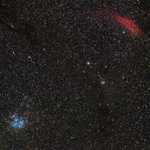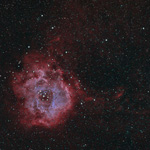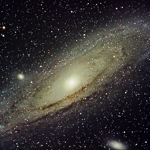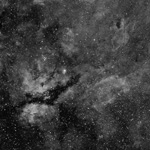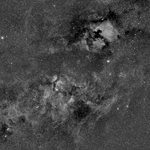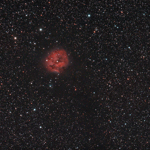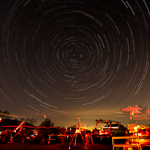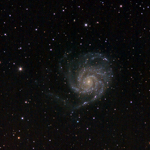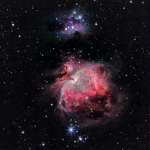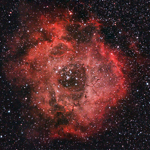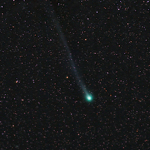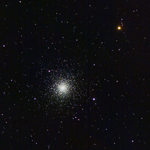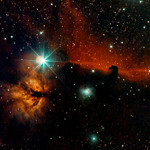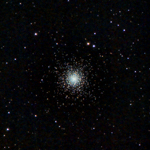Astrophotography
I first started "messing about" with astrophotography about January 2015. As it turns out--what a learning curve! Simply put, you are trying to photograph incredibly dim objects (that are themselves billions of miles away) buried in light-polluted skies when the platform you are standing on (the earth) is in constant motion. Yeah......this is going to be a challenge!
Since the earth is in constant motion relative to the sky, a tripod isn't quite cutting it, particularly through a telephoto lens (telescope). Instead the camera and lens (or telescope) goes on a motorized equatorial mount aligned with the earth's axis, that (ideally) rotates opposite to the earth's rotation--resulting in the object you are trying to photograph remaining stationary with respect to the camera, allowing long time exposures. Except no tracking mount is accurate enough for the long focal length lenses needed--so we have to resort to "auto-guiding." Here the wonder of computers comes into play, by using a second small telescope and small video camera hooked up to a laptop computer. Software monitors the position of a chosen guide-star and sends corrections to the telescope mount....theoretically this allows accurate tracking....but of course there is a learning curve with getting this all to work. Meanwhile, modern digital cameras give a huge advantage here relative to the "old days" of film. Still, with long exposures at high ISO settings, image noise becomes a serious problem. So, we then resort to "stacking"--basically using software to merge 20, 30, 50 or more individual exposures, lining them up and averaging the image on a pixel-by-pixel basis. Since the noise is basically random, but the object you are trying to photograph is constant, by averaging enough images together the noise begins to drop out, leaving behind an incredibly faint image. Careful processing can then bring that image out.....
The above is a simplified explanation of the basic process used in astrophotography. Of course, one of the biggest factors is light pollution--the "bleeding" of our urban and suburban lights into the night sky, drowning out the faint signals we are after. A "dark sky site" really helps in this regard. Fortunately, there are sites that are darker than surburbia, and by joining an astronomy club you can get access to these sites. I joined the Howard Astrnomical League: Howard Astronomical League--HAL and they have both public and private (members only) star parties at a few select sites that they have arranged to get access to. The images below are some of my efforts to date....I still have a way to go, but definitely feel I am making progress--and having a lot of fun doing it!
The matrix of images below is a series of links, taking you to a separate page for each image. Image titles in orange text indicate 'extended' pages, where I have either presented multiple images of the object(s), or included some science to go along with the objects. The matrix is presented in reverse-chronological order, with my newer images at the top, and my earliest images at the bottom.
| Flaming Star Nebula | |
| SNR G132.7+01.3 | |
| Elephant Trunk Nebula Sharpless 2-129 Elephant Trunk to Outter 4 | |
| IC 342 Phantom Galaxy | |
| Galaxy NGC 891 | |
| Cygnus Mosaic Project | |
Collections | |||
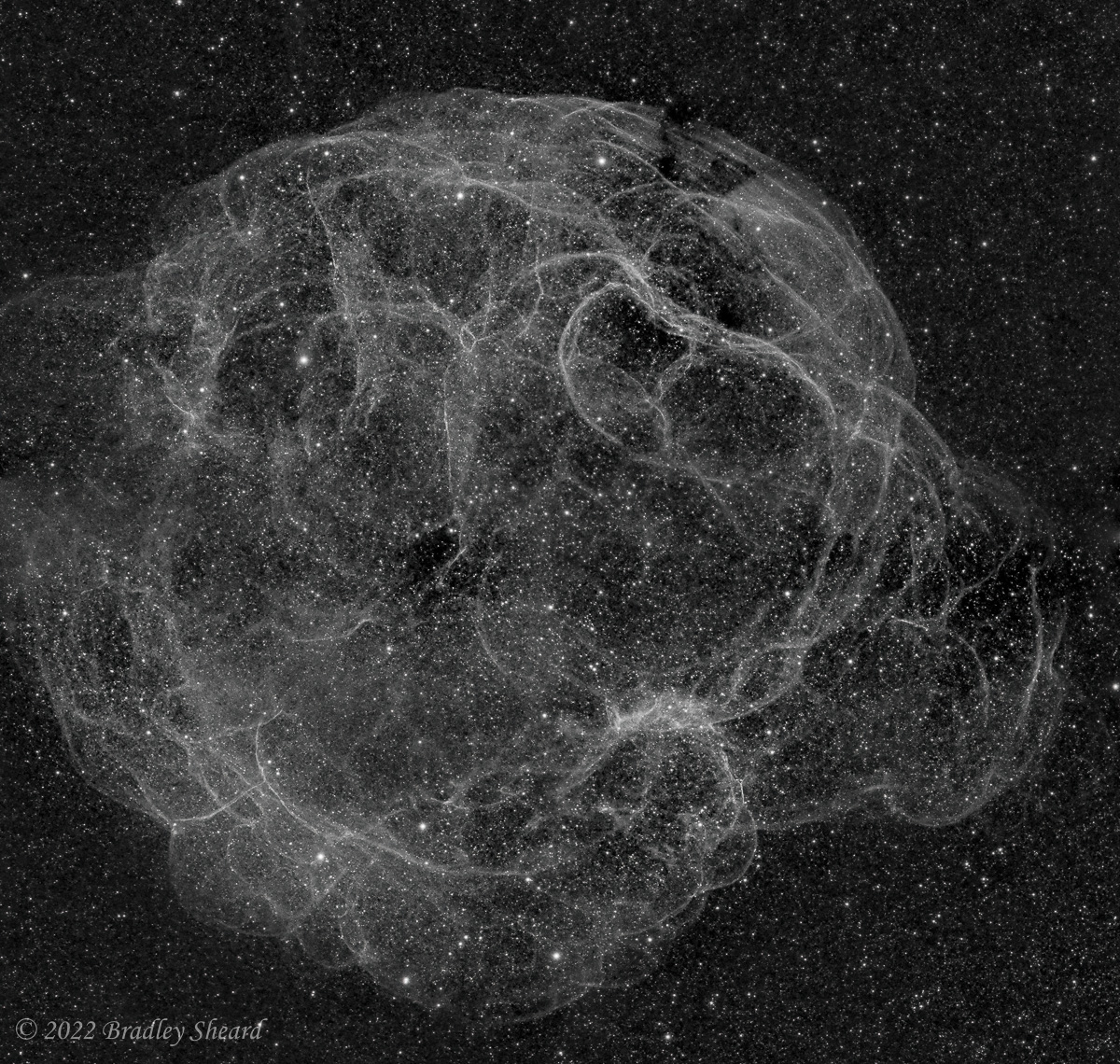 |
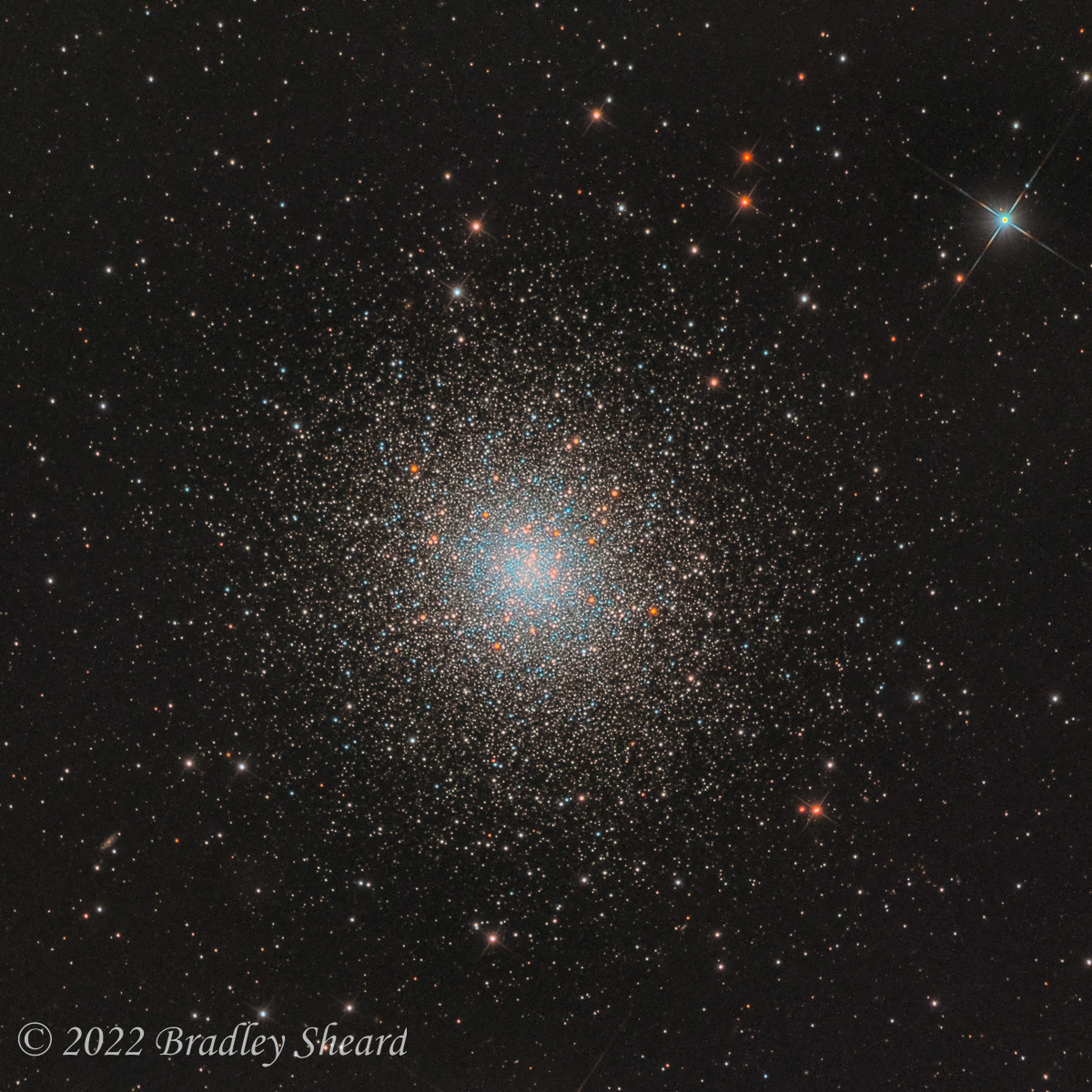 |
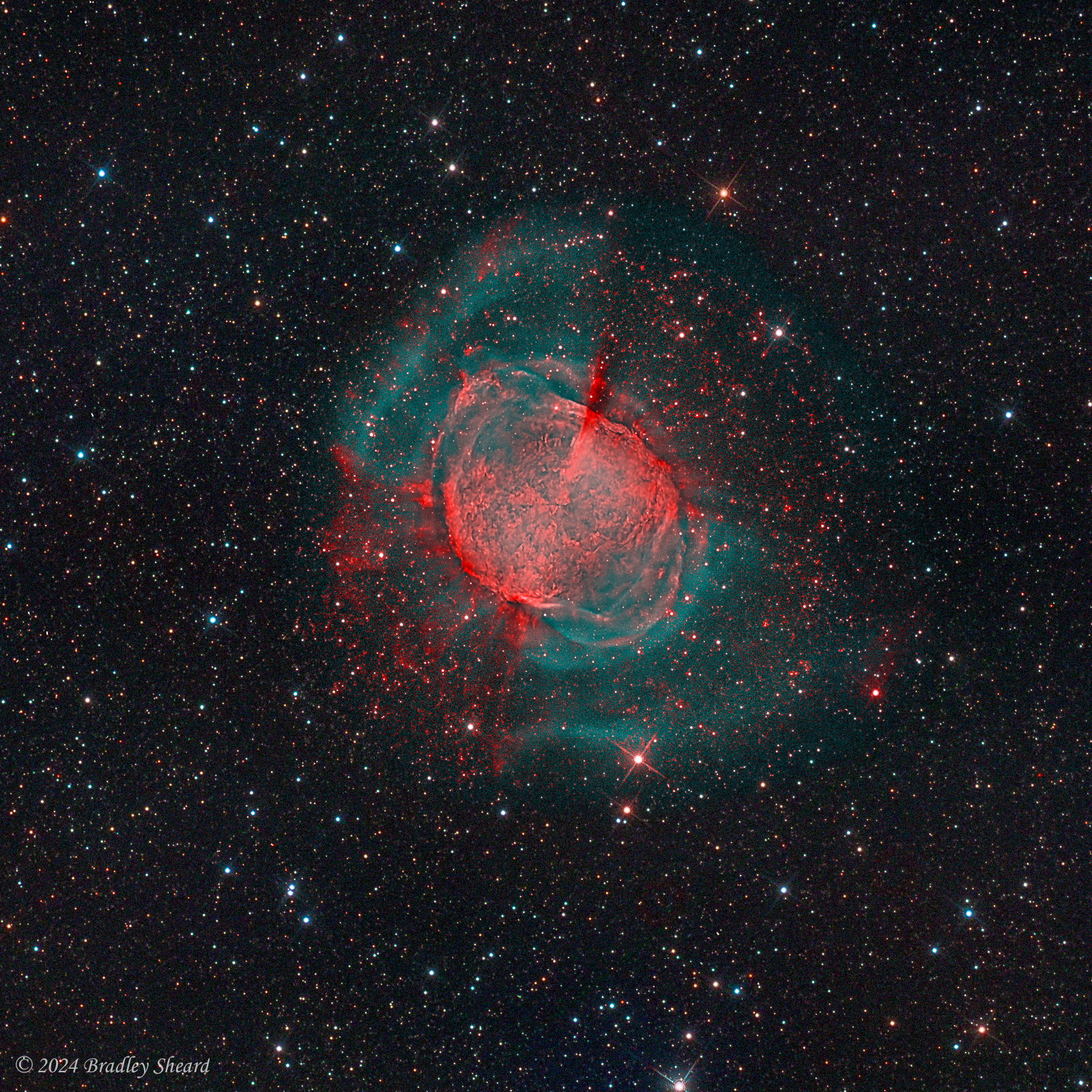 |
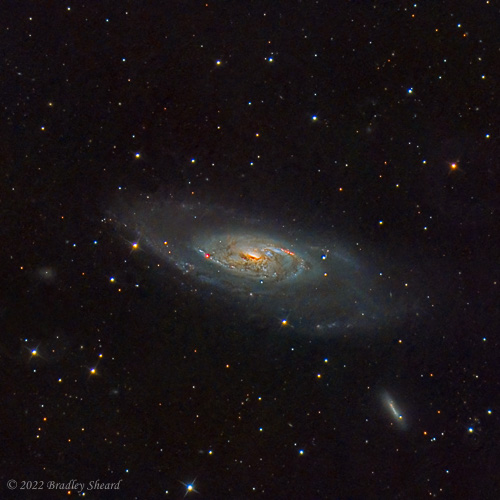 |
| 58. Supernova Remnants | 63. Globular Clusters | 69. Planetary Nebula | 74. Galaxies |

